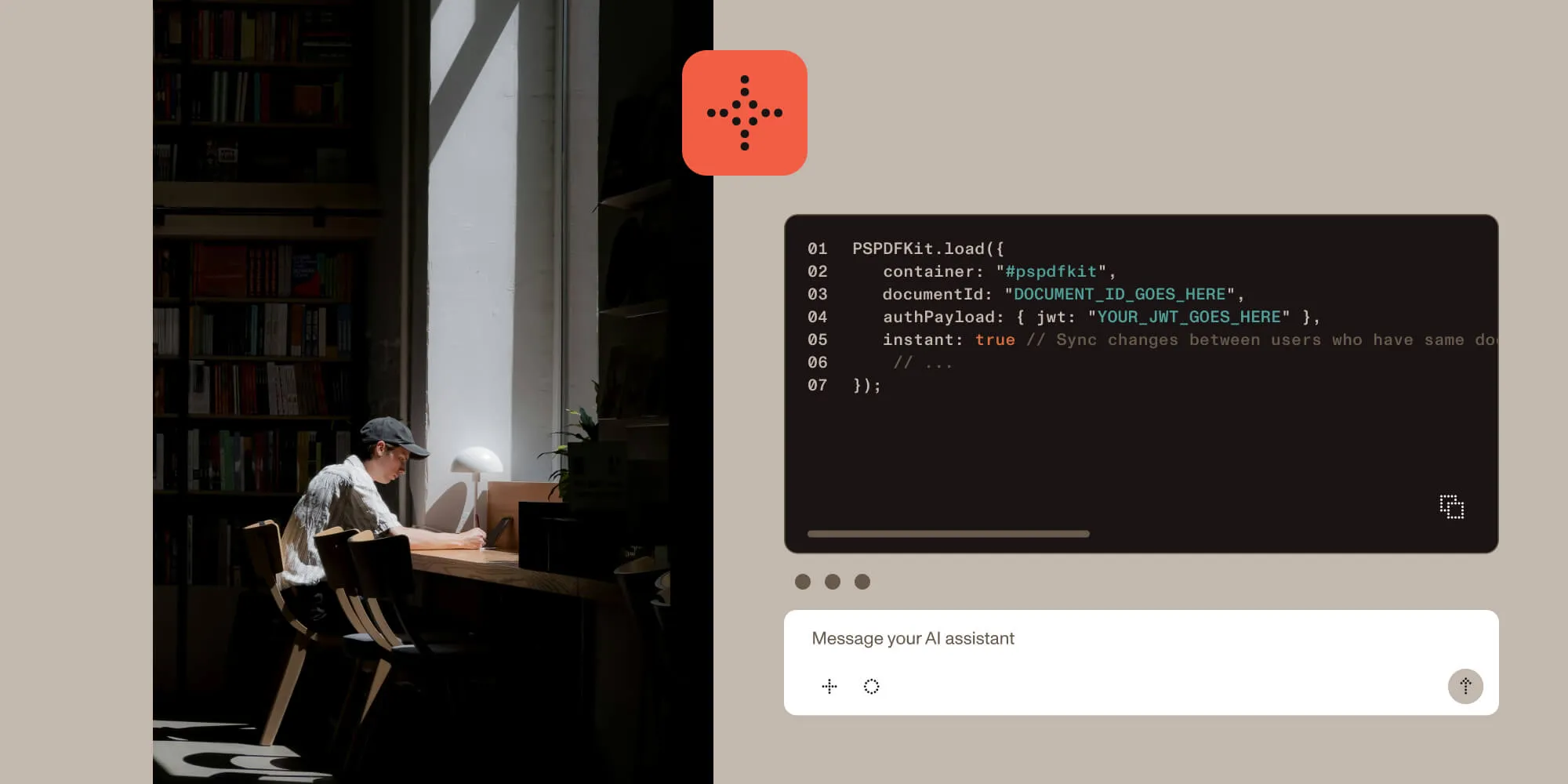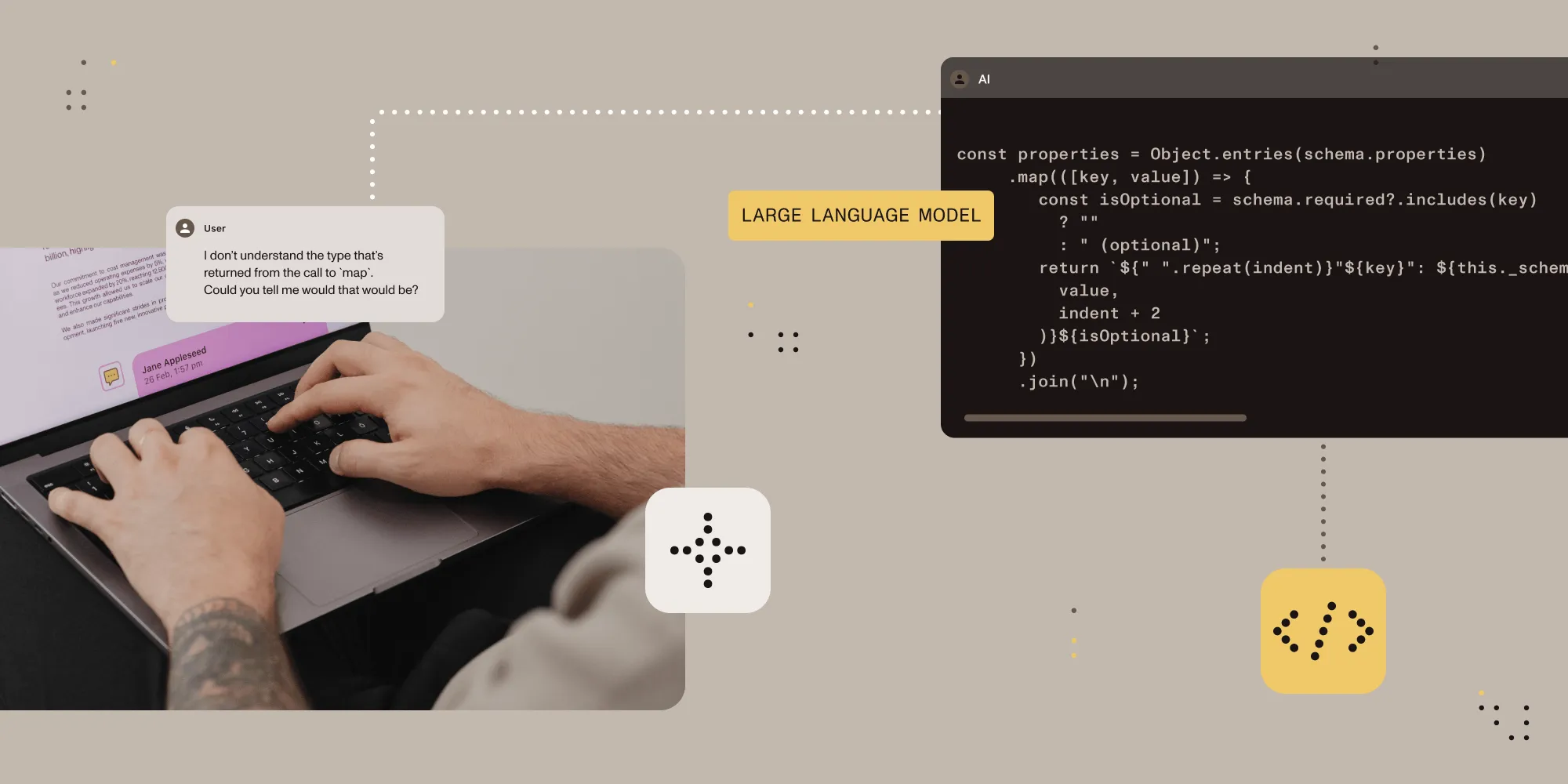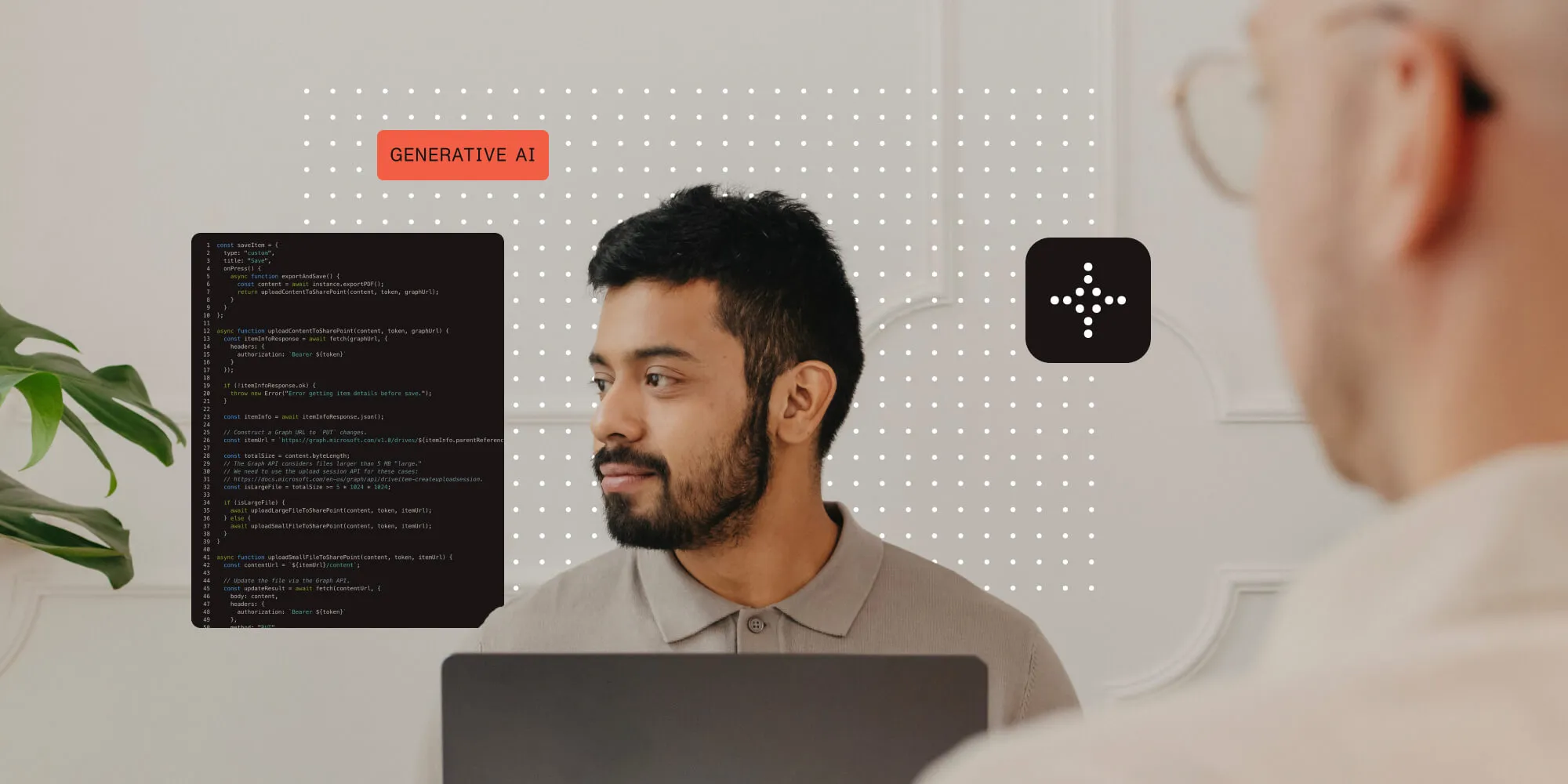Programming in the AI era
Table of contents

The advent of AI technologies like ChatGPT has fundamentally transformed many industries, and programming is no exception. The traditional workflow for programmers, which relied heavily on manual coding, debugging, and problem-solving, is now being augmented by powerful AI tools. This blog post explores how AI — specifically ChatGPT — is revolutionizing the way programmers work and offers insights and advice on navigating this new landscape. Additionally, it’ll take a look at other AI tools that are reshaping the programming field.
For more on this topic, check out Leveraging AI to conquer unfamiliar programming languages.
The traditional programming workflow
Before the rise of AI, the typical programming workflow involved several key steps:
- Planning and design — Defining a problem, outlining solutions, and creating design documents. This stage often involved a lot of brainstorming, discussions, and drawing up detailed plans to ensure that the final product met all requirements.
- Coding — Writing code manually, often from scratch, while adhering to coding standards and best practices. This process required a deep understanding of the programming languages and frameworks in use.
- Debugging — Manually testing the code to identify and fix bugs, which could be a time-consuming and meticulous process. Debugging often required sifting through extensive logs and using various tools to pinpoint issues.
- Optimization — Improving the efficiency and performance of the code through manual review and refactoring. This step involved analyzing code to find inefficiencies and rewriting parts of it to enhance performance.
- Documentation — Writing detailed documentation to ensure maintainability and ease of understanding for future developers. This task was crucial for the long-term sustainability of the project but was often seen as a tedious chore.
The impact of AI on programming
AI tools like ChatGPT have introduced significant changes to this workflow:
- Enhanced coding assistance — ChatGPT can generate code snippets, suggest optimizations, and even help in writing entire functions or modules. This reduces the time spent on manual coding and allows programmers to focus on higher-level design and logic. Other tools, such as GitHub Copilot and Tabnine, provide similar assistance by autocompleting code and suggesting improvements based on the context.
- Streamlined debugging — AI can assist in identifying bugs and suggesting fixes more quickly than traditional methods. ChatGPT can analyze error messages and logs, providing insights that help programmers resolve issues faster. Tools like DeepCode and Snyk use AI to scan code for vulnerabilities and suggest fixes.
- Automated documentation — AI tools can automatically generate documentation based on code, ensuring documentation is always up to date, in turn reducing the burden on developers. Examples include tools like Katalon Recorder, which offers real-time documentation generation.
- Learning and adaptation — ChatGPT can serve as an on-demand tutor, helping programmers learn new languages and frameworks by providing examples and explanations in real time. Additionally, platforms like Replit provide AI-driven coding environments that facilitate learning and rapid prototyping.
Personal impact on my work life
As a programmer, the integration of AI tools like ChatGPT into my workflow has been both challenging and rewarding. Initially, there was a learning curve to understand how to effectively use these tools without becoming overly reliant on them. However, as I became more comfortable with AI assistance, I found that my productivity increased significantly. Tasks that used to take hours, such as debugging complex issues or writing extensive documentation, could now be completed in a fraction of the time.
Moreover, AI has opened up new opportunities for creative problem-solving. By offloading repetitive and mundane tasks to AI, I can focus on innovative solutions and complex problem-solving, which has made my work more engaging and fulfilling. The ability to quickly learn new programming languages and frameworks with the help of AI has also expanded my skillset and adaptability in a rapidly evolving tech landscape.
How I actually use it
In my daily coding work, AI tools significantly enhance various stages of the development process. Here’s how.
Coding
AI assists by autocompleting code snippets and suggesting optimizations, which saves time on writing repetitive code. This allows me to concentrate on implementing the core logic and ensures high-quality code by providing real-time feedback on coding standards and best practices.
Debugging
AI helps analyze error messages and logs, offering potential fixes, and quickly identifying root causes. This accelerates problem-solving and reduces downtime. Additionally, AI can predict potential bugs by analyzing code patterns, adding an extra layer of reliability.
Documentation
AI generates real-time documentation based on code, ensuring it’s always up to date. This maintains high code quality and makes it easier for team members to understand and contribute to a project. AI also assists in creating user manuals and API documentation, enhancing the accessibility of the final product.
Security considerations when using AI tools
While AI tools greatly enhance productivity, it’s crucial to be cautious about the content you share with them. Sensitive information, proprietary code, or confidential project details should be handled with care. Always be aware that data sent to AI platforms might be stored or accessed by third parties, and there’s a risk of unintentional exposure. To mitigate this, avoid sharing sensitive data unless absolutely necessary, and use AI tools with strong privacy policies and data protection measures. Balancing the benefits of AI with these security considerations ensures your work remains both efficient and secure.
Best practices to protect your work
Use trusted AI platforms — Ensure that the AI tools and platforms you use have robust security measures and clear privacy policies. Opt for reputable providers known for their commitment to data protection and confidentiality.
Limit sensitive data sharing — Avoid sharing sensitive or proprietary information with AI tools. Whenever possible, anonymize data or use placeholder information to protect your intellectual property.
Enable security features — Take advantage of any security features offered by the AI tool, such as encryption, secure access controls, and multi-factor authentication. These features add an extra layer of protection to your data.
Regularly update software — Keep your AI tools and associated software up to date with the latest security patches and updates. This minimizes vulnerabilities and protects against potential threats.
Monitor and audit usage — Regularly review the data shared with AI tools and monitor their usage. Conduct periodic audits to ensure compliance with security protocols and identify any unusual or unauthorized access to your data.
Advice to fellow programmers
For those looking to integrate AI tools like ChatGPT into their workflow, below are some actionable tips.
Start small
Begin by using AI for specific tasks, such as code suggestions or debugging assistance, and gradually expand its use as you become more comfortable. Tools like GitHub Copilot or Tabnine can be excellent starting points for enhancing your coding efficiency.
Stay informed
Keep up with the latest developments in AI and programming. Understanding how these tools are evolving will help you leverage their full potential. Follow industry blogs, attend webinars, and participate in online forums to stay updated.
Balance AI and manual work
While AI can handle many tasks, it’s important to maintain a balance and not become overly reliant on it. Use AI as an aid, not a crutch. Always validate AI-generated code and suggestions to ensure they meet your standards.
Collaborate with AI
Treat AI as a collaborator. Engage with it actively, asking questions and seeking explanations to enhance your understanding and improve the quality of your code. Tools like Replit offer collaborative coding environments where AI can assist multiple users simultaneously.
Embrace continuous learning
The programming landscape is constantly changing, and AI is a powerful tool for learning and growth. Use it to explore new languages, frameworks, and techniques.
For more on this topic, check out How will Generative AI replace SDK engineers?.
Conclusion
AI is radically changing the way programmers work. By automating repetitive tasks and providing intelligent assistance, these tools are enhancing productivity and enabling developers to focus on more creative and complex aspects of programming.
Embracing AI in your workflow can lead to significant improvements in efficiency and job satisfaction, making it an essential component of the modern programmer’s toolkit. As AI continues to evolve, it’s crucial for programmers to stay adaptable and open to new technologies. By integrating AI tools like ChatGPT, GitHub Copilot, Tabnine, and others into your workflow, you can enhance your productivity, keep your skills up to date, and remain competitive in the rapidly changing tech industry.







